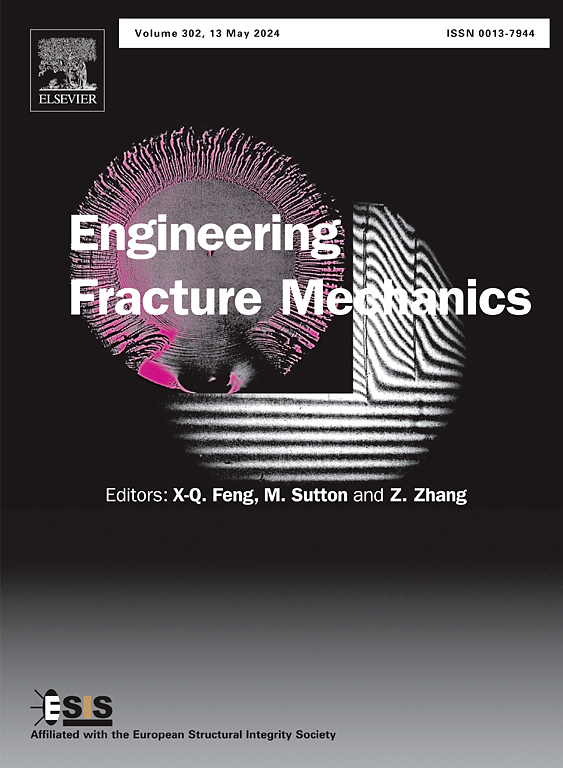铝合金的拉伸延展性:多孔塑性模型的实验与模拟
IF 5.3
2区 工程技术
Q1 MECHANICS
引用次数: 0
摘要
在本研究中,我们研究了铝合金在不同回火条件下的韧性破坏模型。我们建议使用具有应力增强形核规则的多孔塑性模型来描述被认为与颗粒存在密切相关的延性破坏过程。主要目的是确定是否可以使用一组失效参数来描述铝合金在几种回火条件下的塑性。为了支持这一研究,对由铝合金AA6110挤压板制成的光滑和缺口样品进行了张力试验。通过改变合金的热处理,四种材料被认为具有不同的强度、加工硬化和塑性,而组成颗粒的晶粒组织和分布不变。第二个目标是评估多孔塑性模型的成本效益校准程序。张力试验的有限元模拟表明,校准程序是准确的,并且当使用应力增强形核规则时,可以在所有四种回火条件下使用相同的失效参数集,精度可接受。本文章由计算机程序翻译,如有差异,请以英文原文为准。
Tensile ductility of an aluminium alloy: Experiments and simulations with a porous plasticity model
In this study, we investigate the modelling of ductile failure in an aluminium alloy in different temper conditions. We propose using a porous plasticity model with a stress-enhanced nucleation rule to describe the ductile failure process that is assumed to be closely related to the presence of particles. The primary objective is to determine if a single set of failure parameters can be used to describe the ductility of the aluminium alloy in several temper conditions. To support this investigation, tension tests are carried out on smooth and notched samples made from an extruded plate of aluminium alloy AA6110. By varying the heat treatment of the alloy, four materials are considered with different strength, work hardening, and ductility, while the grain structure and the distribution of the constituent particles are unchanged. A secondary objective is to evaluate a cost-efficient calibration procedure for the porous plasticity model. Finite element simulations of the tension tests show that the calibration procedure is accurate and that the same set of failure parameters can be used for all four temper conditions with acceptable accuracy when using the stress-enhanced nucleation rule.
求助全文
通过发布文献求助,成功后即可免费获取论文全文。
去求助
来源期刊
CiteScore
8.70
自引率
13.00%
发文量
606
审稿时长
74 days
期刊介绍:
EFM covers a broad range of topics in fracture mechanics to be of interest and use to both researchers and practitioners. Contributions are welcome which address the fracture behavior of conventional engineering material systems as well as newly emerging material systems. Contributions on developments in the areas of mechanics and materials science strongly related to fracture mechanics are also welcome. Papers on fatigue are welcome if they treat the fatigue process using the methods of fracture mechanics.

 求助内容:
求助内容: 应助结果提醒方式:
应助结果提醒方式:


